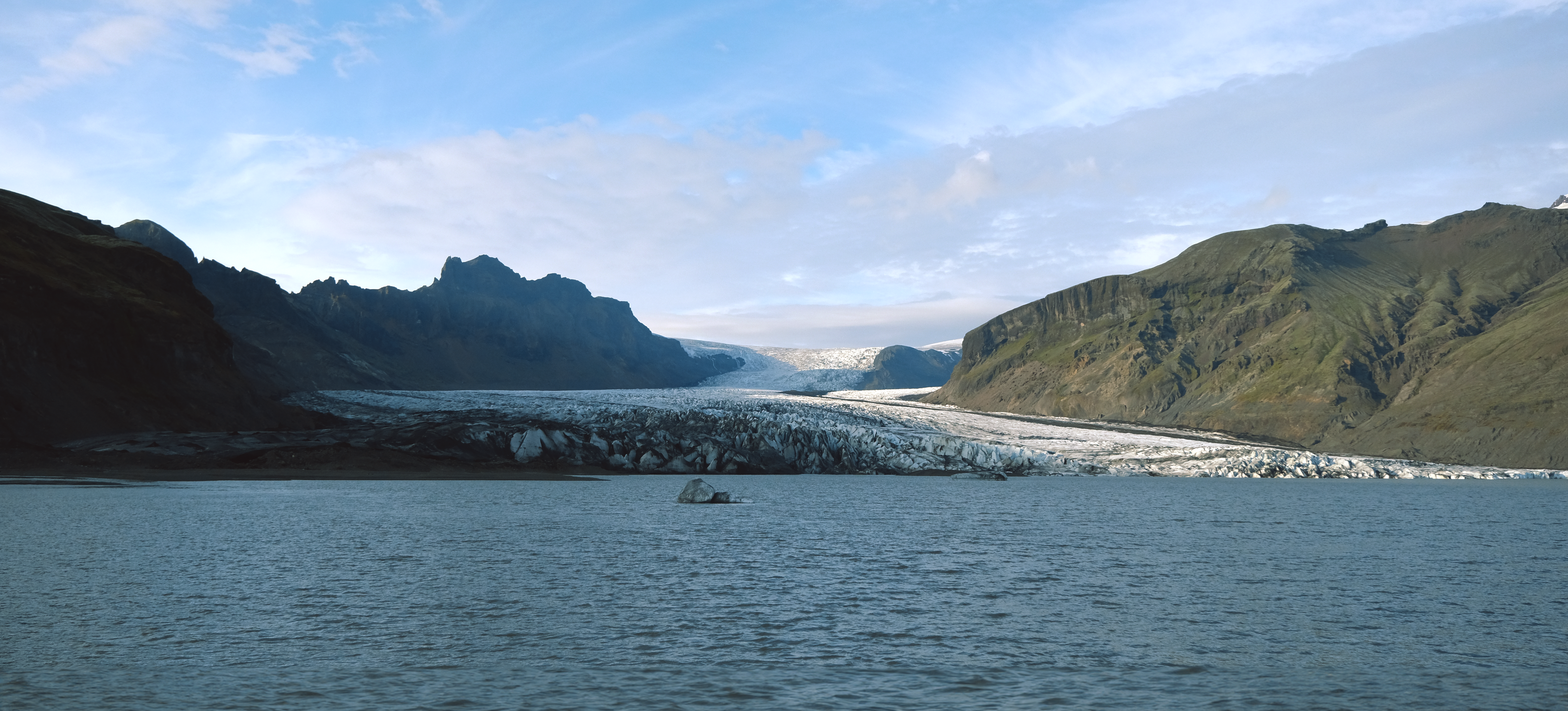
Sachi Kitajima Mulkey

Sachi Kitajima Mulkey
On a July afternoon at the Perlan Museum in Reykjavík, Iceland, during the peak of tourist season, roughly two dozen visitors line up to enter the world’s first indoor replica of a glacier. About 200 miles away, at a campsite parking lot in southern Iceland, another line of tourists waits for their guided hike up to the real thing: Skaftafellsjökull, one of the country’s disappearing natural landmarks.
“When they are gone from nature, we will have already worked to preserve them,” says Jóhanna Erla, the Director of Marketing at the Perlan Museum. A year ago, the Perlan opened its Ice Caves exhibit – even integrating snow and ash from nearby volcanoes into that first-ever indoor glacier replica. But soon, ice caves like the Perlan’s may be all that’s left for visitors. In 2003, Iceland held a funeral for Okjökull, the country’s first glacier to vanish from climate change. Researchers estimate that by 2200 almost all of them will be gone.
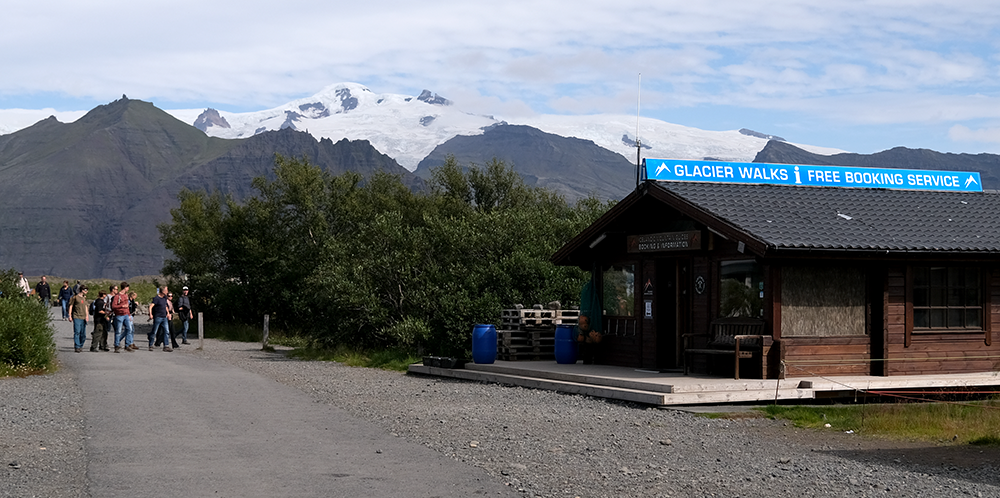
Historically a geological menace for Icelandic settlers, these icy goliaths have recently become a growing major attraction in the country’s robust tourism economy, along with providing the backbone of its energy infrastructure. But Iceland’s population is over 4 times smaller than the number of international visitors, and the tourism boom comes at a carbon cost: Despite Iceland’s comparatively low greenhouse gas emissions, which advance global warming, visitors to Iceland contribute to a surprisingly high proportion of Iceland’s carbon emissions. With so much on the line, an uncertain future leaves the tourism industry scrambling to decide how best to share the experience of their glaciers before they’re gone.
Iceland’s glaciers grew over thousands of years as layers of snow compressed under their own weight to form hulking, crystalline expanses of ice, streaked with remnants of volcanic ash. Encompassing 11% of the country’s land, glaciers once posed a danger to early Icelandic settlers as they melted seasonally, flooding valleys and creating torrential rivers that restricted travel. Now, they captivate more than an estimated million visitors a year with their signature, ethereal blue glow. Such nature-seeking tourists provide 39% of the country’s GDP and support almost half of its jobs. And in a country that boasts almost 100% renewable energy, more than 70% of it comes from hydropower that relies on water from glacier melt.
“The future is pretty scary, safe to say,” says Andri Gunnarsson, the Chairman of the Icelandic Glaciology Society and Manager of Hydrological and Glaciological Research at Landsvirkjun, the National Power Company of Iceland. “[Iceland’s glaciers] will disappear. There’s no more uncertainty; it’s just about the timing.” As their glaciers vanish, Iceland’s energy landscape, tourism attractions, and economy will have to adapt.
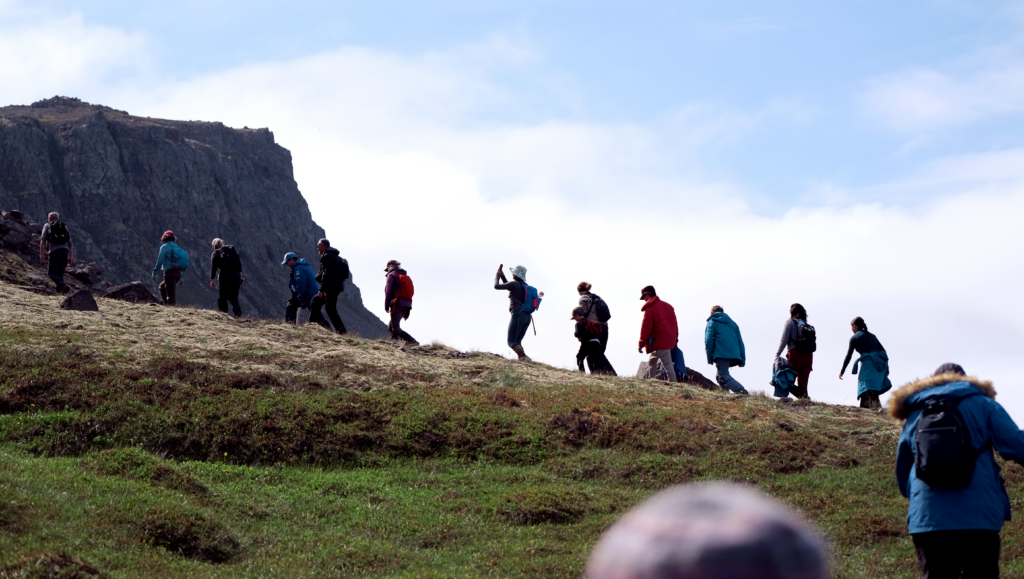
Along with facilitating seasonal field work, Gunnarsson leads guests and scientific researchers on seasonal glacier expeditions in Iceland. From huts maintained by the Glaciological Society, researchers can get up close to glaciers to track their melt while in dialogue with people outside academia, like artists. For Gunnarsson, engaging different parts of society with the reality of the climate crisis is an important step toward educating the public.
“We know the data but scientists aren’t always the best people to tell a story,” he says, while acknowledging the complexity of having visitors travel from abroad for his expeditions. “You want people to witness climate change, but at the same time it’s fueling the climate crisis.”
This irony is not lost on the country’s officials. “You can’t really compare anything called tourism in my youth with what it is today. It’s just changed so dramatically,” says Ólöf Ýrr Atladóttir, former Director General of Icelandic Tourism. In her 10 years as director, Atladóttir often puzzled over how to solve the tourist industry’s crowd-management issues. During her tenure, she says she contemplated a Disneyland-like approach to managing crowded natural tourist attractions. Many popular sites, such as hot-steam geysers, glaciers, and volcanos, are dangerous for visitors in such large numbers, she says. By curating the experience more, she believes visitors would get a safer and more sustainable experience.
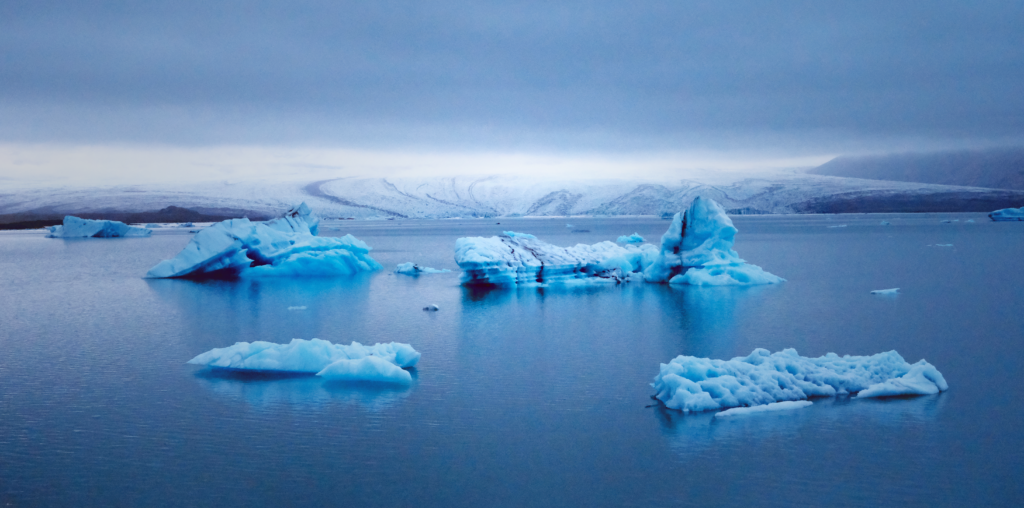
“People travel because they want to have an expression of freedom, and we have to maintain that,” Atladóttir said. “But if I was a glacier, how would I look at what is happening?” According to the Iceland Monitor, more than 80% of tourists rent cars during their stay and arrive by plane or ship, which are high emission methods of travel.
Now running and operating her own travel agency, Atladóttir says losing glaciers would be complicated for the economy and come with difficult consequences for the country. But in the face of inevitable change, Atladóttir advocates for future planning that considers potential new attractions that melting glaciers might reveal, such as river rafting. “Conservation sometimes is looking at nature as a static thing, but glaciers have always grown, receded and changed,” she says. “You have to think, are you preserving [nature] just because you happen to be there and you like the way it is?”
At the Perlan museum, the world’s first attempt at preserving the experience of a glacier proved tricky. To test such a large ice structure, the museum used a decommissioned fishery warehouse freezer, mimicking the layer-by-layer compression of snow that forms real glacier ice. Although the museum opened six years ago, due to logistics and COVID-19 related challenges, the Ice Caves exhibition has only recently celebrated one uninterrupted year of operation. The completed exhibit is held inside one of the six water tanks that the museum is built on, and features real snow from the nearby Bláfjöll mountains, and volcanic ash sourced from Eyjafjallajökull, a volcano that last erupted in 2010.
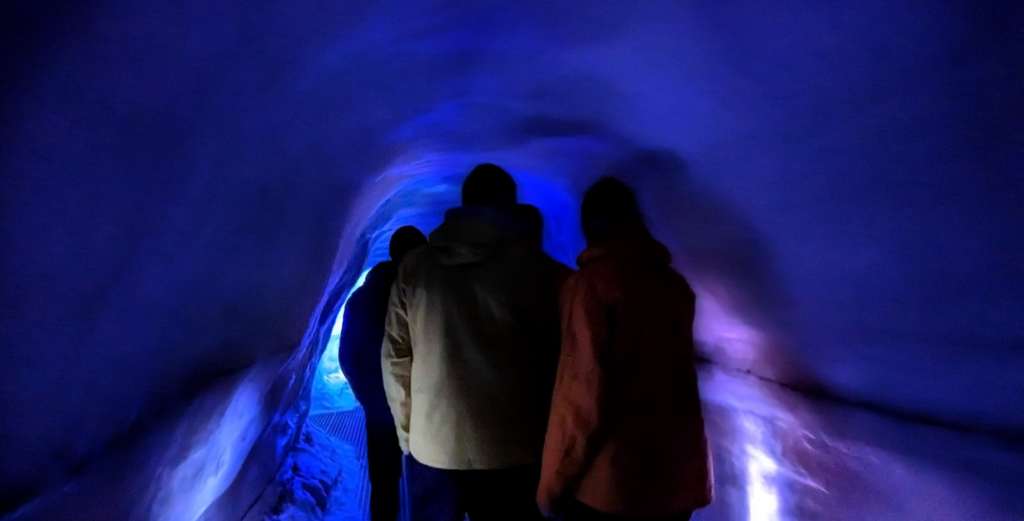
Today, visitors can descend into a blue-ice series of tunnels under the Perlan for a completely Instagrammable glacier experience. Along with touchable recreations of glacier moss and frigid temperatures, visitors can pose at the selfie station or on the “Game of Thrones”-inspired ice-throne before ascending out of the exhibit into a climate change exhibition on glacier melt.
“Of course it’s going to be different, because you aren’t actually going there. Because not everyone can,” says Erla, the Director of Marketing at the Perlan. “It’s about learning, getting a sense of the deep cold and experiencing the inside of the cave.” Even while real glaciers exist, she says visitors come to Ice Cave for its accessibility. Due to the danger of visiting real glacial ice caves, such as unpredictable weather and rough terrain, Erla says going to an ice cave may not be safe for all tourists. Located near travel ports in Reykjavík and running on renewable energy, the Ice Caves exhibit also provides a glacier experience at a relatively low carbon cost.
While some glacier hiking tour companies may be utilizing a “see them before they’re gone” strategy in their marketing, Erla says the Perlan is only in the business of education. Like Gunnarsson, she views the experience of a glacier as an important part of understanding their significance. “I don’t think climate change is a selling point. I think it’s just reality,” she says, noting that artificial ice caves could eventually replace lost glaciers as a tourist attraction. At the Perlan, visitors can also experience other recreations of nature, such as a virtual northern lights show or learn about the Great Auk, a now-extinct Icelandic bird.

Glaciers were historically “just a part of the landscape,” but as awareness of climate impacts has increased among the population, Erla, Gunnarsson, and Atladóttir all say that they have become an important Icelandic symbol. “Just look at our flag,” Erla says. “It represents ice, fire, and water. It’s part of the country.”
For Atladóttir, thorough future planning by Icelandic officials is a critical, and historically overlooked, key to developing sustainable tourism that can recover after glaciers melt. But with planning, she believes the country can be resilient to a glacier-less future. “It is sad,” she says. “But it is a reality. And you adapt to that and then you find beauty in something else.”
Editor’s Note: Lindblad Expeditions, our Planet Forward Storyfest Competition partner, made this series possible by providing winners with an experiential learning opportunity aboard one of their ships. All editorial content is created independently. We thank Lindblad Expeditions for their continued support of our project.